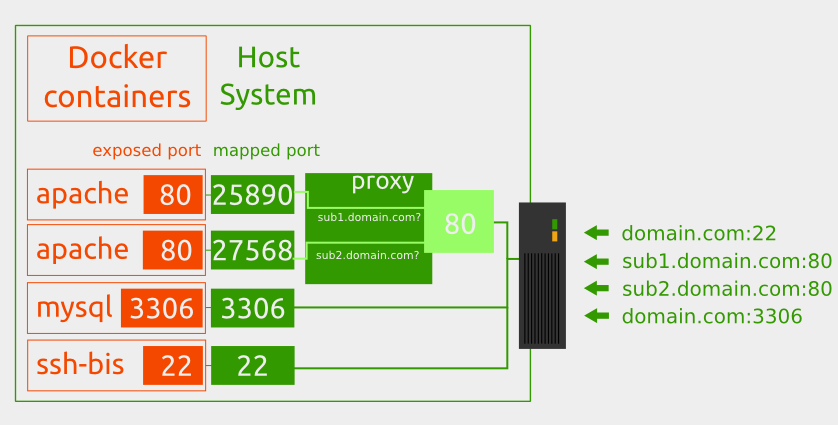
The mapping can be done dynamically with the publish all flag or. mode: host for publishing a host port on each node, or ingress for a swarm mode port to be load balanced. Docker allows you to map ports from containers to the hosts running the containers.protocol: the port protocol (tcp or udp).ports : - target : 80 published : 8080 protocol : tcp mode : host That can’t be expressed in the short form. There is also the long format syntax which allows additional fields to be specified Under the hood, docker run command is an alias to docker container run. The old, pre 1.13 syntax is still supported. The syntax of the new command is as follows: docker container run OPTIONS IMAGE COMMAND ARG. Your host, for example if you run a docker run command, the thing that will runĪs a result of that command is the container. 2) the sharing path should be exactly same on win host and docker host.

sslPort 'sslPort': 44381: This port on the host is mapped to the containers port 443 when launching. However, when you specify sslPort, Visual Studio still passes -p 5002:443, so your service should still be listening on port 5002. these are key facts for 2 stages mapping: 1) virtualbox sharing from win host to docker host, default share folder: c/Users to C:\Users. If true, pass -P to docker run which will publish all exposed ports to a random port. You can do this by mapping the port of the container to the host port at the particular interface: docker run -p 127.0.0.1:HOSTPORT:CONTAINERPORT -t image. The container is what is running on top of docker client mapping docker host vm local folder to container. The host is the operating system in which the Docker client is running. To check in which network your containers are running you could use inspect.

docker run -rm -networkyourfoldernamedefault debian ping service1. It behaves the same way if we expose a range of ports. The above command opens two random ports in the host computer and maps them with ports 80 of the Docker container. If you’re using docker compose the pattern is HOST:CONTAINER, for example “3000:80” To test that containers are only visible inside the network try to ping them from another container. docker run -name myapp -d -P myApp:latest. Over what is exposed and allow specify specific ports to allow to be accessed. These handy mappings can give you control Docker allows you to map ports to what is available (exposed) to the host and


 0 kommentar(er)
0 kommentar(er)
